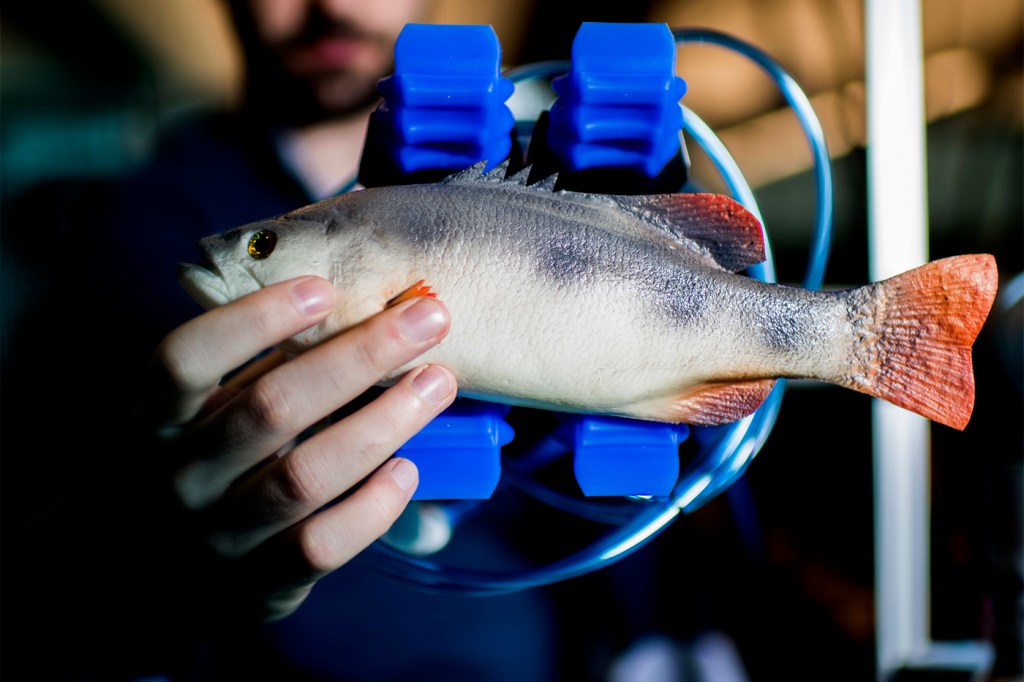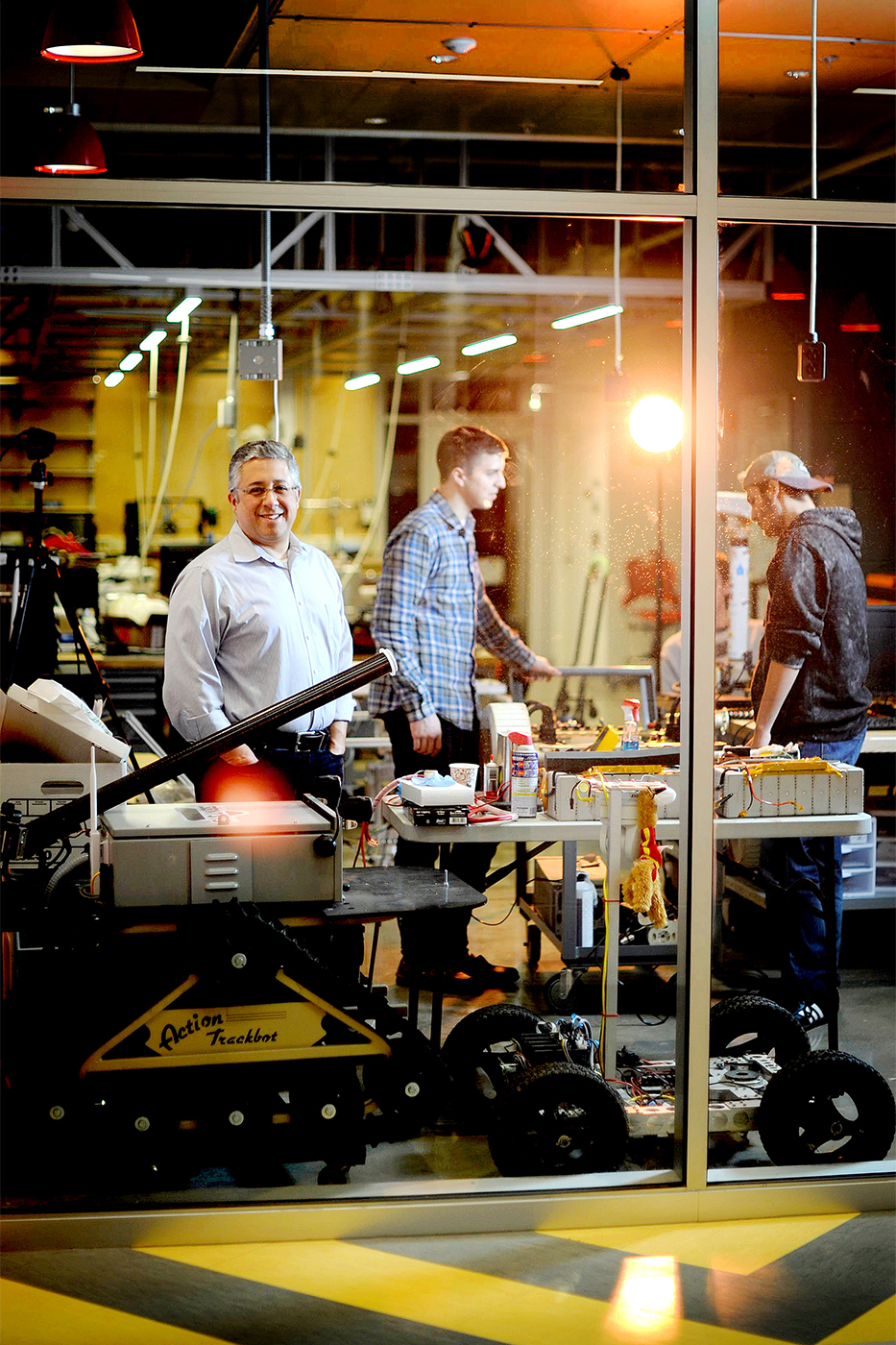Northeastern University researchers are designing the future of work, starting with collaborative robots for processing seafood

Advanced sensing, automation, and artificial intelligence are changing workplaces in many industries. But these changes don’t have to mean that robots are replacing humans.
Researchers at Northeastern are working with the seafood processing industry as a test case to learn more about how robots could be integrated into the workforce. These robotic coworkers would simultaneously make the workplace safer and more comfortable for human workers and more efficient and profitable for companies.

Taskin Padir, an associate professor of electrical and computer engineering at Northeastern, is working with the seafood processing industry to integrate robots into the current workforce. Photo by Matthew Modoono/Northeastern University
“There are numerous risky, dangerous parts of seafood processing, which suggests that there might be value in developing collaborative robotic systems,” says Kristian Kloeckl, an associate professor of art, design, and architecture who is investigating the best way for humans and robots to work together. “We’re interested in understanding how people in this industry work, and how they can be supported in their work by adaptive and collaborative machines.”
The process of getting a fish from the ocean to a restaurant or supermarket is cold, messy, and dangerous. The animals have to be gutted, deboned, fileted, weighed, measured, sorted and packaged—all in a frigid, slippery warehouse.
There aren’t enough U.S. workers interested in this kind of work, says Taskin Padir, an associate professor of electrical and computer engineering who will be designing and building the robots. Much of the seafood caught by American fishermen is shipped overseas for processing, and then sold back to retailers in the United States.
“If we can augment every human worker we have right now with a robotic coworker, we should be able to double the production,” says Padir, who has been working with seafood processing plants in Massachusetts for the past year. “We should be able to process the seafood that we cannot currently process in the United States.”
But it’s not all about efficiency. With the help of a recent grant from the National Science Foundation, Northeastern researchers are completely re-imagining the industry. Alicia Sasser Modestino, associate professor of public policy, urban affairs, and economics, is evaluating the economic impact on workers and companies; John Basl, associate professor of philosophy, is looking at the ethics of autonomy (How do we build a robot that respects human values, such as privacy?); and Kemi Jona, assistant vice chancellor of digital innovation and enterprise learning, is designing training programs to give workers the skills they will need in the new workplace.
“Ultimately, if we talk about developing systems for human-robot collaborations, we really need to understand the human component in that, in order to make any moves forward,” says Kloeckl. “The way we design these machines, and the way we design the integration of these machines, will very much be a process of designing work.”
If humans and robots are going to work together, they need to understand one another. The robots have to be built in such a way that they are able to work near and around humans, and take cues from each other.
“We cannot write scripts for this collaboration, because humans improvise,” Padir says. “Humans are different from day to day, hour to hour. So how do we capture that rich interaction, and try to embody this within the robots’ computational system?”
This is just one of several challenges facing researchers who are studying the role robots will play in the workplaces of the future. Padir and his colleagues expect the solutions they find will be applicable in many industries, not just seafood processing. Their work will help build a future in which technology assists human workers, instead of replacing us.
“Robots should augment human abilities, so humans can do their jobs better and faster, and in a more pleasant way,” Padir says. “That’s our philosophy. We will introduce robots with the primary goal of making the worker experiences better, augmenting human skills.”
For media inquiries, please contact media@northeastern.edu.




